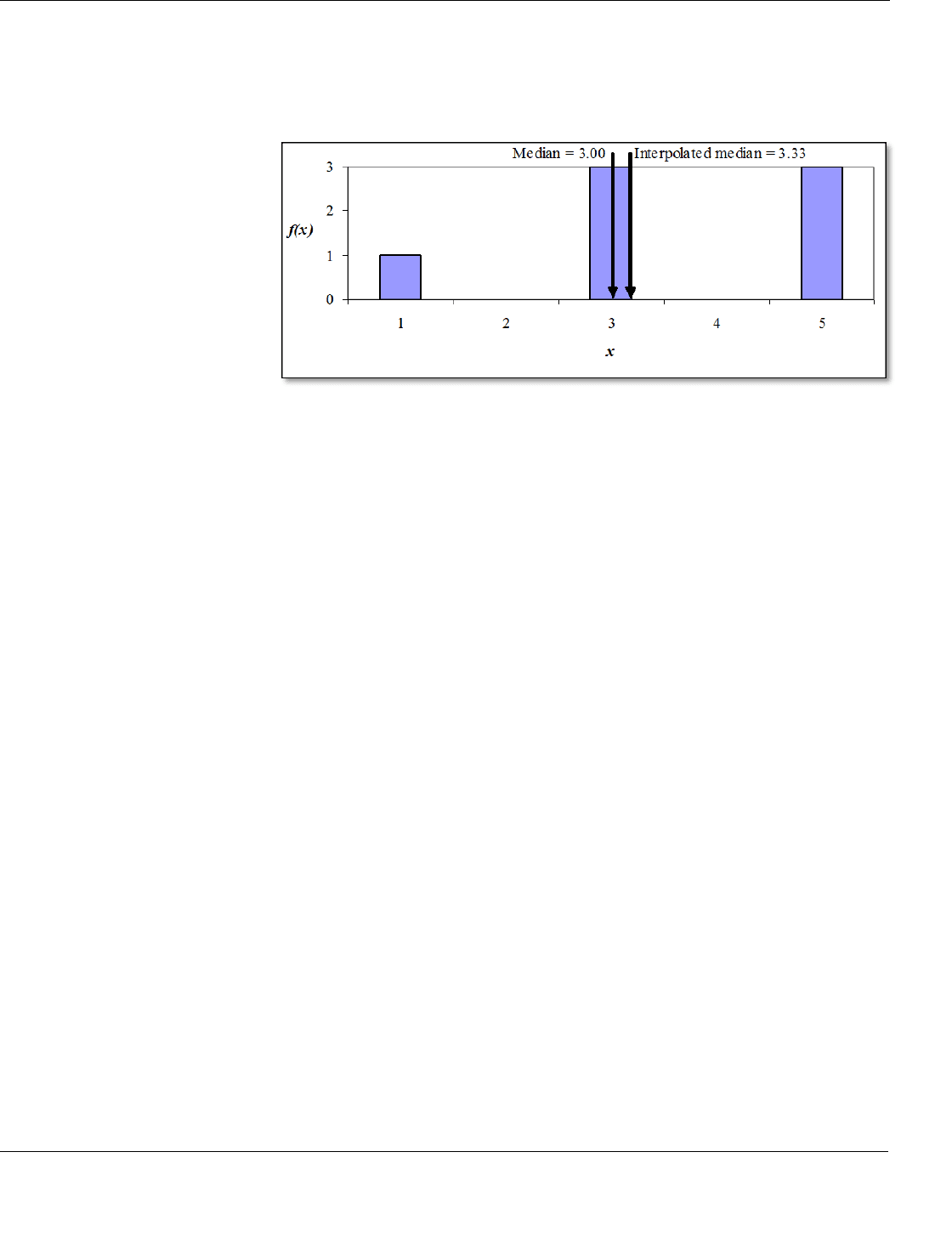Hill A.V. The Encyclopedia of Operations Management: A Field Manual and Glossary of Operations Management Terms and Concepts
Подождите немного. Документ загружается.


ptg6843605
implied shortage cost – inductive reasoning
The Encyclopedia of Operations Management Page 166
The best approach (or combination of approaches) depends on the specific situation.
See Enterprise Resources Planning (ERP), lean sigma, pilot test, post-project review, project charter, RACI
Matrix, Software as a Service (SaaS), stakeholder analysis, turnkey.
implied shortage cost – See shortage cost.
inbound logistics – See logistics.
See logistics, Over/Short/Damaged Report, Third Party Logistics (3PL) provider, Transportation
Management System (TMS), value chain.
income statement – A standard financial statement during a certain accounting period (usually quarterly or
annually) that summarizes how much money came in to a firm (income or revenue), how much money was paid
out (expenses), and the difference (net income or profit) after taxes.
See balance sheet, EBITDA, financial performance metrics.
incoming inspection – The process of checking the quality and quantity of an order received from a supplier.
Incoming inspection can be done for both internal and external sources of supply. Incoming inspection
samples items based on inspection policies and determines if the incoming order (batch) is acceptable or not. If it
is not acceptable, the materials are reworked, returned to the vendor, or scrapped. Well-managed firms charge
their suppliers for the time and materials cost of handling defective materials and use supplier scorecards to
communicate assessments of their supplier’s performance.
A chargeback is a customer-assessed penalty on the supplier when the shipment is late, has poor quality, or
has improper packaging. One company visited by this author received a batch of cartons that were defective.
They did not know that they were defective until they started to fill the cartons with ice cream. They stopped
production immediately when the problem was found, but still had significant product loss. As a result, they did
not pay for the defective cartons and charged the supplier a fee for the ice cream lost due to the defective cartons.
See Acceptable Quality Level (AQL), acceptance sampling, Advanced Shipping Notification (ASN), dock-to-
stock, inspection, Lot Tolerance Percent Defective (LTPD), quality management, receiving, Statistical Process
Control (SPC), Statistical Quality Control (SQC), supplier scorecard.
Incoterms – Rules for trade contracts published by the International Chamber of Commerce (ICC) and widely used
in international and domestic commercial transactions; also known as International Commercial terms.
Incoterms are accepted by governments and firms around the world for use in international trade,
transportation, and distribution. These terms support trade by reducing ambiguity in trading relationships. Free
on Board (FOB) is an example. The Incoterms in effect on January 1, 2011 can be found at
www.iccwbo.org/incoterms.
See FOB, terms.
incremental cost – See marginal cost.
indented bill of material – See bill of material (BOM).
independent demand – (1) The demand from external customers rather than a higher-level assembly or company-
run stocking location. (2) Demand that must be forecasted rather than planned because it cannot be planned
based on the plans for other items under the organization’s control.
Examples of independent demand include consumer demand for a retailer, customer orders arriving at a
distributor warehouse, and demand for an end item for a manufacturing firm. Internal demand for a component
that goes into an end item is considered dependent demand because this demand is planned based on the
production plan for the end item.
In the 1980s, this term clearly meant demand from external customers and therefore had to be forecasted.
Today, however, the term is less clear because many firms now receive detailed demand information from their
customers via electronic communications, such as EDI.
See demand, dependent demand, inventory management.
indirect cost – See overhead.
indirect labor – See overhead.
indirect materials – See overhead.

ptg6843605
inductive reasoning − infrastructure
Page 167 The Encyclopedia of Operations Management
inductive reasoning – Inductive reasoning is making inferences about a larger subject based on specific examples.
In contrast, deductive reasoning begins with a general “theory” or concept that makes inferences about
specific applications or situations. Arguments based on experience or observation are best expressed inductively,
while arguments based on laws, rules, or other widely accepted principles are best expressed deductively.
Consider the following pair of examples. John: “I’ve seen that when I throw a ball up in the air, it comes
back down. So I guess that the next time I throw the ball up, it will come back down.” Mary: “I know from
Newton’s Law that everything that goes up must come down. And so, if you throw the ball up, it must come
down.” John is using inductive reasoning, arguing from observation, while Mary is using deductive reasoning,
arguing from the Law of Gravity. John’s argument is from the specific (he observed balls being thrown up and
coming back down) to the general (the prediction that similar events will result in similar outcomes in the future).
Mary’s argument is from the general (the Law of Gravity) to the specific (this throw).
The difference between inductive and deductive reasoning is mostly in the way the arguments are expressed.
Any inductive argument can also be expressed deductively, and any deductive argument can also be expressed
inductively. John’s inductive argument was supported by his previous observations, while Mary’s deductive
argument was supported by her reference to the Law of Gravity. John could provide additional support by
detailing his observations, without any recourse to books or theories of physics, while Mary could provide
additional support by discussing Newton’s law.
Both inductive and deductive reasoning are used in business. However, lean sigma programs often
emphasize
data-based decision making, which is inductive (based on hard data) rather than deductive.
See lean sigma, Minto Pyramid Principle, paradigm.
industrial engineering – The branch of engineering that deals with the design, implementation, and evaluation of
integrated systems of people, knowledge, equipment, energy, and material to produce products and services in
the most efficient way.
Industrial engineers draw upon the principles and methods of engineering analysis and synthesis, operations
research, and the physical and social sciences to design efficient methods and systems. Industrial engineers work
to eliminate wastes of time, money, materials, energy, and other resources. Typical industrial engineering issues
include plant layout, analysis and planning of workers’ jobs, economical handling of raw materials, flow of
materials through the production process, and efficient control of the inventory. Industrial engineers work not
only in manufacturing, but also in service organizations, such as hospitals and banks. The field of industrial
engineering has expanded in recent years to consider many issues across the supply chain.
See Institute of Industrial Engineers (IIE), standard time, systems engineering.
industry analysis – A methodology used to study and evaluate economic trends in an industry.
Industry analysis involves a study of the economic, socio-political, and market factors that determine the
future of a sector of an economy. Major factors include relative buyer and supplier power and the likelihood of
new entrants to the market. Whereas industry analysis focuses on the underlying economic factors of an entire
industry, competitive analysis focuses on specific competitors and their competitive positions in the market.
Porter’s Five Forces are often used as the basis for an industry analysis.
See competitive analysis, five forces analysis, operations strategy, SWOT analysis.
infinite capacity planning – See infinite loading.
infinite loading – Creating a production plan based on planned manufacturing leadtimes without regard to available
production capacity; also called infinite capacity planning and infinite scheduling.
Most Materials Requirement Planning (MRP) systems use fixed planned leadtimes that are independent of
the amount of work-in-process (WIP) inventory in the system. This approach implicitly assumes that all
resources have “infinite” capacity and that capacity constraints will not affect the schedule. However, most MRP
systems provide load reports that managers can use to see when load exceeds the capacity.
See Advanced Planning and Scheduling (APS), finite scheduling, load, Materials Requirements Planning
(MRP), project management.
INFORMS – See Institute for Operations Research and the Management Sciences (INFORMS).
infrastructure – See operations strategy.

ptg6843605
input/output control – instantaneous replenishment
The Encyclopedia of Operations Management Page 168
input/output control – A production planning and control method that monitors planned and actual inputs and
planned and actual outputs for a resource, such as a workcenter.
If the planned input is greater than the planned output, the planned queue of work-in-process (WIP)
inventory will increase. The same is true for actual input, output, and WIP. If actual WIP grows, actual
throughput time will increase. Therefore, it is important to keep the planned input and output at about the same
level so that WIP and throughput time do not change.
The example input/output report on the right shows the queue
(backlog) starting at 3 units, shrinking when the actual input is less
than the actual output, and growing when the actual output is
greater than the actual input. When the planned and actual values
are not the same, management should identify the cause of the
differences and take action when needed.
See capacity, Capacity Requirements Planning (CRP), load.
in-sourcing – See outsourcing.
inspection – The process of checking units to ensure that they are free from defects.
Inspection can be done for batch control (i.e., accept or reject a batch of parts (batch control) or process
control (i.e., check if a process is in control). Inspection can use source inspection (i.e., the operator checks his
or her own work), successive check (the next person in the process, or final inspection (the final produce is
inspected), or some combination of the above.
Ideally, inspection is done at the source so the process has immediate feedback and has a sense of ownership
of quality. Common slogans for this concept include quality at the source and early detection of defects.
Most firms also conduct final inspection before products are put into finished goods inventory or delivered to
customers. Inspection should also be done just before a bottleneck so valuable bottleneck time is not wasted on
defective parts. More attention should be given to the gold parts that have gone through the bottleneck because
valuable bottleneck capacity has been invested in these parts.
Successive check is a quality inspection system where each person checks the work done by the previous
process (Shingo 1986). Theoretically, successive checks can accomplish 100% inspection by a “disinterested”
person and provide almost immediate feedback and action. If successive checks are done throughout a process,
the probability of a failure getting through is low, but the opportunity for repeated low-value work is high.
Successive inspection requires time, which usually means that these inspections can only be done on a few
potential defects. Also, successive checks may not be able to provide immediate feedback to those who made the
error. The management of Andersen Corporation’s Menomonie, Wisconsin, plant measured escapes as well as
defects, where an escape is defined as passing a bad part to the next workcenter and is measured by successive
step inspections. Management measured escapes to identify opportunities to reduce defects.
Self check is a quality inspection system where each person checks his or her own work (Shingo 1986). In
some sense, this is the ideal inspection because it means that no waste is generated for the next step in the
process, and errors are found and fixed immediately. Self check can be 100%, especially when it is assisted by a
poke-yoke (error-proof) device. Self check is a good example of quality at the source.
Many firms are able to eliminate incoming inspection by having suppliers certify that materials meet certain
quality standards. This saves money and time for both parties. An ideal process has no inspection because
products and processes are so carefully designed that inspection, a non-value-adding activity, is not needed.
See acceptance sampling, attribute, Computer Aided Inspection (CAI), cost of quality, Deming’s 14 points,
error proofing, first article inspection, gold parts, incoming inspection, quality at the source, quality
management, Statistical Process Control (SPC), Statistical Quality Control (SQC), supplier qualification and
certification, Total Quality Management (TQM).
Installation Qualification (IQ) – See process validation.
instantaneous replenishment – Instantaneous replenishment is a materials management term that describes
situations in which the entire lotsize is received all at one time.
Instantaneous replenishment is common when ordering from an outside supplier that ships the entire order
quantity at one time. This is also the situation when a distribution center places an order to an internal plant
because the entire order is shipped to the distribution center at one time.
Input/output control example
Period
1 2 3 4
Planned input
Actual input
10
10
10
10
11
11
11
13
Planned output
Actual output
11
11
10
9
12
12
12
12
Queue = 3 2 3 2 3

ptg6843605
Institute for Operations Research and the Management Sciences (INFORMS) − Institute of Industrial
Engineers (IIE)
Page 169 The Encyclopedia of Operations Management
In contrast, with non-instantaneous
replenishment, the production batch (lot) does
not arrive all at the same time. This is a
common situation when ordering from an
internal plant. As shown in the graph on the
right, inventory grows when the product is
being produced and declines when not being
produced. When being produced, inventory
grows at rate p − d, where p is the production
rate and d is the demand rate. When not being
produced, the inventory declines at the
demand rate d. The average lotsize inventory
for non-instantaneous replenishment is the (1 – d/p)Q/2 and the optimal lotsize is
2
(1 / )
DS
ic d p
. As expected,
as production rate p approaches infinity, /d p approaches zero, the average lotsize inventory approaches Q/2,
and the optimal lotsize approaches the instantaneous EOQ.
See cycle stock, Economic Order Quantity (EOQ), lotsizing methods.
Institute for Operations Research and the Management Sciences (INFORMS) – The largest professional
society in the world for professionals in the field of operations research (O.R.).
INFORMS was established in 1995 with the merger of the Operations Research Society of America (ORSA)
and The Institute for Management Sciences (TIMS). The society serves the scientific and professional needs of
educators, investigators, scientists, students, managers, and consultants, as well as the organizations they serve,
by such services as publishing 12 scholarly journals that describe the latest O.R. methods and applications and a
membership magazine with news from across the profession. The society organizes national and international
conferences for academics and professionals as well as members of the society’s special interest groups.
INFORMS publishes many scholarly journals, including Management Science, Operations Research,
Manufacturing & Service Operations Management (MSOM), Decision Analysis, Information Systems
Research, INFORMS Journal of Computing, Interfaces, Marketing Science, Mathematics of OR,
Organizational Science, and Transportation Science. The INFORMS website is www.informs.org.
See Manufacturing and Service Operations Management Society (MSOM), operations management (OM),
operations research (OR).
Institute for Supply Management (ISM) – A professional society for supply management professionals.
Founded in 1915, the Institute for Supply Management (ISM) claims to be the largest supply management
association in the world. ISM’s mission is to lead the supply management profession through its standards of
excellence, research, promotional activities, and education. ISM’s membership base includes more than 40,000
supply management professionals with a network of domestic and international affiliated associations.
Formerly known as the National Association of Purchasing Management, the organization changed its name
to Institute for Supply Management in May 2001 to reflect the increasing strategic and global significance of
supply management. ISM has a certification process for the Certified Purchasing Manager (C.P.M.) designation.
The process requires a passing grade on the CPM exam. ISM provides many publications to its members,
including the Journal of Supply Chain Management, a publication for purchasing professionals and educators.
The ISM website is www.ism.ws.
See operations management (OM), purchasing, supply chain management.
Institute of Industrial Engineers (IIE) – The world’s largest professional society dedicated solely to the support
of the industrial engineering profession and individuals involved with improving quality and productivity.
Founded in 1948, IIE is an international, non-profit association that provides leadership for the application,
education, training, research, and development of industrial engineering.
IIE publishes two academic journals (IIE Transactions and The Engineering Economist), a monthly news
magazine (IE Magazine), and a practitioner management journal (Industrial Management).
Inventory
Safety stoc
k
inventor
y
Graph for non-instantous replenishment
Inventory
increasing at
rate p – d
Inventory
decreasing at
rate d
I
max
= (1 – d/p)Q
Time

ptg6843605
in-stock – intermodal shipments
The Encyclopedia of Operations Management Page 170
The IIE website is www.iienet2.org.
See industrial engineering, operations management (OM).
in-stock – See service level.
integer programming (IP) – A type of linear programming where the decision variables are restricted to integer
values.
The term “integer programming” is short for integer linear programming. Mixed integer programming (MIP)
has some decision variables that are continuous and some that are integer.
See assignment problem, knapsack problem, linear programming (LP), mixed integer programming (MIP).
Integrated Product Development (IPD) – The practice of systematically forming teams of functional
disciplines to integrate and concurrently apply all necessary processes to produce an effective and efficient
product that satisfies the customer’s needs.
IPD is nearly synonymous with simultaneous engineering and concurrent engineering. Benefits claimed for
IPD include less development time, fewer engineering changes, less time to market, higher quality, and higher
white collar productivity.
See concurrent engineering, Engineering Change Order (ECO), New Product Development (NPD),
simultaneous engineering.
intellectual capital – The sum of an organization’s collective knowledge, experience, skills, competences, and
ability to acquire more; also called knowledge capital.
At least one source defined intellectual capital as the difference between book value and market value.
Although this might be too strong, most management experts agree that the balance sheet and other financial
statements do not reflect intellectual capital and that intellectual capital is the most valuable asset for many firms.
See intellectual property (IP), knowledge management, learning organization.
intellectual property (IP) – An intangible asset based on knowledge work.
Commercial forms of IP include software, product designs, databases, chemical compounds, drugs, and
inventions. Artistic forms of IP include books, music, plays, photography, images, and movies. Organizations
and individuals often use patents, trademarks, and copyrights to try to protect IP, but often the best protection for
IP is avoiding unauthorized access.
See contract manufacturer, intellectual capital, knowledge management, learning organization, offshoring,
outsourcing, sourcing, technology transfer.
interchangeability – See interchangeable parts.
interchangeable parts – Identical components that can be selected at random for an assembly; interchangeability
is a closely related term.
Before the 18th century, highly skilled workers made parts for products, such as guns, using imprecise
equipment and methods, which resulted in each product being different. The principle of interchangeable parts
was developed throughout the 18th and 19th centuries. Interchangeable parts were used as early as 1814 for
clocks in Switzerland.
Firms with interchangeable parts can make high volumes of identical parts and easily assemble them into
products. Interchangeable parts are made to conform to standard specifications, which were made possible by
the development of machine tools, templates, jigs, fixtures, gauges, measuring tools (e.g., calipers and
micrometers), and industry standards (e.g., screw threads). Interchangeable parts enabled the assembly line and
mass production, which were developed in the early 20th century.
Interchangeability has many benefits compared to the old craft approach to manufacturing, including (1)
reduced assembly labor time and cost by allowing easy assembly and repair without custom fitting, (2) reduced
repair time and cost, (3) reduced labor rates and training costs because the assembly process requires less skill,
(4) easier field repair due to interchangeable parts, and (5) reduced materials cost because parts are more likely to
work in the assembly.
See commonality, standard parts, standard products.
intermittent demand – See lumpy demand.
intermodal shipments – A transportation term used to describe the movement of goods by more than one mode of
transportation (e.g., rail, truck, air, and ocean).

ptg6843605
Internal Rate of Return (IRR) − interpolated median
Page 171 The Encyclopedia of Operations Management
Intermodal shipments usually involve movement of goods by railroad (in a trailer or container) that originate
and terminate with either a motor carrier or ocean shipping line. For example, an ocean container might be
picked up by a truck, delivered to a port, transported by a ship, and then picked up by another truck in another
country. In the trucking industry, intermodal often refers to the combination of trucking and rail transportation.
See logistics, mode, multi-modal shipments, trailer, Transportation Management System (TMS).
Internal Rate of Return (IRR) – The discount rate at which the net present value of the future cash flows of an
investment equals the cost of the investment.
The IRR has to be found by trial and error (numerical) methods. It is the discount rate at which the net
present value is zero. Given cash flows (C
1
, C
2
, …, C
N
) in periods 1, 2, …, N, the IRR is the rate of return r such
that
0
0
(1 )
N
n
n
n
C
NPV
r
. The Compounded Annual Growth Rate (CAGR) entry provides much more detail.
See Compounded Annual Growth Rate (CAGR), financial performance metrics, geometric mean, investment
center.
internal setup – Work done to prepare a machine for production while the machine is down.
One of the first and most important setup reduction activities is to reduce or eliminate internal setup tasks.
This is done by performing external setups, which is doing the setup work while the machine is still working.
See external setup, setup, setup time reduction methods.
interoperability – The ability of two or more diverse systems to work together.
Interoperability is the ability of two or more systems to communicate, exchange information, and use the
information that has been exchanged without modification or development of custom interfaces and tools.
Interoperability is often a challenge when systems are made by different manufacturers. One key to
interoperability is compliance with technical specifications and standards.
See commonality, modular design (modularity), network effect.
interplant orders – Transfer of materials from one manufacturing or distribution location to another inside the
same organization.
See manufacturing order, purchase order (PO).
interpolated median – A measure of the central tendency used for low resolution data (such as surveys, student
grades, and frequency data) where several values fall at the median; the interpolated median is equal to the
median plus or minus a correction factor that adjusts for a non-symmetrical (skewed) distribution when many
observations are equal to the median.
Many experts consider the median to be a better measure of central tendency than the mean because the
median, unlike the mean, is not influenced by extremely low or high values. Some people consider the
interpolated median to be a better measure of central tendency than the median when many values are equal to
the median (computed in the standard way) and the distribution is non-symmetrical (skewed). However, some
statistical experts assert that the interpolated median does not have a good theoretical basis and was just “made
up by someone who could not decide between the mean and the median.”
23
When the distribution is skewed, the interpolated median adjusts the median upward or downward according
to the number of responses above or below the median. A right-skewed distribution will have a positive
correction factor and a left-skewed distribution will have a negative correction factor.
Define the following parameters for a data set: N is the number of observed values, im is the interpolated
median, m is the median computed in the standard way, n
b
is the number of values below (less than) m, n
e
is the
number of values equal to m, and n
a
is the number of values above (greater than) m. The equation for the
interpolated median is then im = m for n
e
= 0; otherwise im = m + (n
a
– n
b
)/(2n
e
). If n
b
= n
a
, the distribution is not
skewed, the correction factor is zero, and the interpolated median will be equal to the median (i.e., im = m).
(Note: n
b
= n
a
will always be true when n
e
≤ 1.) If n
b
< n
a
, the distribution is right-skewed, the correction factor
is positive, and the interpolated median is greater than the median; conversely, if n
b
> n
a
, the distribution is left-
skewed, the correction factor is negative, and the interpolated median is less than the median. If the number of
23
Private conversation with Professor Chris Nachtscheim, Carlson School of Management, University of Minnesota.

ptg6843605
interquartile range
–
intranet
The Encyclopedia of Operations Management Page 172
values equal to the median (n
e
) is equal to zero or one, the number of values above and below the median will
always be equal and the correction factor will be zero.
For example, a sample of N = 7 responses for a five-point Likert survey was x
i
= {1,3,3,3,5,5,5} with a
median of m = 3. (See the histogram below.) The number of observations below the median is n
b
= 1, the
number above the median is n
a
= 3, and the number equal to the median is n
e
= 3. The interpolated median is
then i
m
= 3.33, which is higher
than the median of 3 because
n
a
> n
b
. The right-skewed
distribution “pulls” the
interpolated median above the
median, but only slightly.
Gretchen Donahue and
Corrie Fiedler, instructors at
the University of Minnesota,
noted that the above equation is
for a five-point Likert scale and
recommend using the
following equations for student
grades on a four-point scale: im = m, for n
e
= 0; im = m – 1/6 + (N/6 – n
b
/3)/n
e
, for n
e
> 0. With this equation the
interpolated median for the above example is 3.11, which is less than the 3.33 found above, but still greater than
the median.
See mean, median, skewness, trimmed mean.
interquartile range – A statistics term for the 50% of the observations included from the top of the lowest quartile
to the bottom of the highest quartile of a distribution.
The interquartile range (IQR) is defined by the points at the 75th and 25th percentile of the data, and
therefore, is the range that includes the middle 50% of the observations. Because the IQR uses the middle 50%,
it is not affected by outliers or extreme values in the top or bottom quartiles.
See box plot, fractile, outlier, range.
interval notation – A mathematical convention for writing the range for a variable.
The interval notation uses brackets [ or ] when endpoints are included and parentheses ( or ) when end points
are not included. The symbols ∞ and –∞ are used for positive and negative infinity and the union sign
is used
to combine sets. For example, the range [5, ∞) includes the number 5 and all values greater than 5. The range
(5,7) includes all values between 5 and 7, but not the endpoints (i.e., 5 < x < 7). The range (–∞, –2]
(1,∞)
includes all negative values less than or equal to –2 and all positive values strictly greater than 1 with 1 not
included in the range. Infinity never has an endpoint, which means that the infinity symbol is always
accompanied by a parenthesis and never by a bracket. Random number generators, such as the Excel function
RAND(), create a stream of values in the range [0,1), which means that it is possible (though unlikely) to get a
value of 0, but never a value of one. In Excel, the random number 1 – RAND() will be in the range (0,1].
See random number, range.
interval scale – See scales of measurement.
intranet – An application of Internet technology, software, and applications within for use within an enterprise.
An intranet is a private network as opposed to the Internet, which is the public network. An intranet may be
entirely disconnected from the public Internet, but is usually linked to it and protected from unauthorized access
by security firewall systems. More loosely, the term may also include extranets. An intranet involves Web-
based technologies and is typically used within an organization’s internal network to centralize applications or
data. It is usually segmented into data or applications that all employees have access to and data or applications
that are restricted to only authorized users.
See corporate portal, e-business, extranet.

ptg6843605
in-transit inventory − inventory management
Page 173 The Encyclopedia of Operations Management
in-transit inventory – The quantity of goods shipped but not yet received.
In-transit inventory may belong to either the shipper or the customer, depending on the terms of the contract.
See inventory management, logistics.
intrinsic forecasting model – See forecasting.
Inventory Dollar Days (IDD) – A Theory of Constraints (TOC) measure of investment in inventory.
The Theory of Constraints (TOC) promotes Inventory Dollar Days (IDD) as a measure of things done
ahead of schedule and Throughput Dollar Days (TDD) as a measure of things done behind schedule. A dollar
day is one dollar held in inventory for one day. When an individual borrows money from a bank, the interest
payment is based on how many dollars are borrowed and for how long, which means that interest is based on
dollar days. When a firm is holds inventory, the cost to the firm is based on the dollar days of inventory. The
IDD can be calculated as IDD = (unit cost) x (quantity on hand) x (days in the system). For example, if a
manufacturing order for 100 units has been waiting at a workcenter for five days and the unit cost is $2, the
workcenter has 100 x 5 x 2 = $1000 dollar days for that order.
Similarly, when a firm is late, the time value of money is lost during the delay. The cost to the firm,
therefore, is based on the dollar days late. TDD measures the value of each late shipment multiplied by the
number of days it was late (i.e., a $1-million order five days late becomes five-million TDD).
Phillip Brooks, president and owner of H. Brooks and Company, a St. Paul, Minnesota distributor of fresh
fruits and vegetables, shared the following quote with the author: “We began measuring dollar days of inventory
last winter, with an item ranking and overall totals by buyer and vendor. You will find that this number will be
surprisingly large and will create an insight followed by instant action – and focus on inventory items that are
unneeded. In the last eight months, we have cut this measure by about 50%.”
The IDD for a set of items during a planning period is the sum of the unit cost for each item times the
number of days in inventory for each item. Therefore, IDD is a time-integrated sum. Any time-integrated sum
can be turned into a time-integrated average by dividing by the number of periods. Therefore, IDD divided by
the number of days in the planning period is the average inventory investment. For example, if a set of items has
an IDD of 30,000 dollar days during a 30-day month, the average inventory investment for the month is
$1000. With a monthly carrying charge of 1%, the carrying cost for these items is $10.
See
carrying cost, inventory turnover, operations performance metrics, periods supply, Theory of
Constraints (TOC), throughput accounting, Throughput Dollar Days (TDD).
inventory management – Inventory management involves planning and control of all types of inventories.
Inventory management involves forecasting demand, placing purchase and manufacturing orders, and filling
sales orders. Inventory management requires two decisions that must be made frequently: when to order, and
how much to order. A less frequent inventory management decision is deciding if an item should be stocked. If
an item is not stocked, the firm must make, assemble, or buy the item in response to customer demand.
Inventory managers may be responsible for all types of inventory:
• Raw materials/purchased components inventory – Purchased materials from outside suppliers.
• In-transit inventory – Inventory shipped, but not yet received.
• Work-in-process inventory (WIP) – Products started in manufacturing, but not yet complete.
• Manufactured components/subassemblies – Parts and subassemblies built and then stored in inventory
until needed for higher-level products or assemblies.
• Finished goods inventory – Products that are complete, but not yet shipped to a customer.
• Supplies/consumables inventory – Supplies needed for the manufacturing process, but do not become a
part of any product (e.g., cleaning supplies for a machine). These are often called Maintenance, Repair, &
Operating Supplies (MRO) items. (Note: MRO has many similar names, including “Maintenance, Repair,
and Operations” and “Maintenance, Repair, and Overhaul.”)
• Scrap inventory – Defective products that will be reworked, recycled, or scrapped.
• Consignment inventory – Products owned by one party, but held by another party until sale.
Inventory control systems must determine when to order (order timing) and how much to order (order
quantity). Order timing can be based on a reorder point (R) or a fixed schedule (every P time periods). Order
quantity can be a fixed quantity Q (possibly the EOQ) or a variable quantity based on an order-up-to level (T).
With an order-up-to (base stock) policy, the order quantity is set to T – I, where I is the inventory position.

ptg6843605
inventory position – inventory turnover
The Encyclopedia of Operations Management Page 174
The table below summarizes the main inventory management approaches with respect to order timing and
order quantity policies. The variable names include: P the periodic review period, Q the order quantity, T the
order-up-to level, R the reorder point, S the order cost, i carrying charge, c unit cost, A annual demand in units, I
current inventory position, s safety stock in units, μ
X
mean demand during leadtime, μ
D
mean demand per period,
and μ
L
mean leadtime.
Summary of the inventory control models
Order quantity
Fixed order quantity (Q)
Order-up-to level (T) Equations
Order
timing
Continuous review
P = 0
Order point system
(R, Q)
Min/Max system
(R, T)
X
R
s
Periodic review
24
P > 0
Milk delivery system
(P, Q)
Periodic review system
(P, T)
2S
P
icA
Equations
2
*
A
S
Q
ic
( )
L D
T P s
Q T I
See ABC classification, active item, aggregate inventory management, carrying cost, consignment inventory,
continuous replenishment planning, continuous review system, dependent demand, distribution, distributor,
Economic Order Quantity (EOQ), forecasting, independent demand, in-transit inventory, inventory position,
inventory turnover, joint replenishment, logistics, lotsizing methods, materials handling, materials management,
Materials Requirements Planning (MRP), min-max inventory system, on-hand inventory, on-order inventory,
order cost, order-up-to level, periodic review system, periods supply, pull system, purchasing, random storage
location, raw materials, reorder point, safety stock, service level, square root law for safety stock, square root
law for warehouses, supply chain management, vendor managed inventory (VMI), Warehouse Management
System (WMS), zero inventory.
inventory position – The amount of inventory available to fill future orders; defined as on-hand plus on-order
minus allocated and minus backordered inventory quantities; also called stock position.
On-hand inventory is the material that is physically located in the plant or warehouse. On-order inventory
includes the materials that have been ordered but not yet received. Allocated inventory and backorders have
been promised to customers or other orders and therefore are not available for use. Many textbooks and training
programs simplify the definition to just on-hand plus on-order.
See allocated inventory, backorder, continuous review system, inventory management, on-hand inventory,
on-order inventory, open order, order-up-to level, reorder point, supply chain management.
inventory shrink – See shrinkage.
inventory turnover – The number of times that the inventory is replaced during a time period (usually a year).
The standard accounting measure for inventory turnover is the cost of goods sold divided by the average
inventory investment. For example, if a firm has an annual cost of goods sold of $10 million and an average
inventory investment of $5 million, the firm has two turns per year. Inventory turnover (T) can also be defined as
52d/I, where d is the average demand in units per week and I is the average inventory in units.
If the current inventory investment is close to the average and the historical rate of consumption is close to
the current rate of consumption, the inverse of the inventory turnover ratio for any inventory is approximately the
periods supply. The inverse of the inventory turnover ratio for work-in-process inventory (WIP) is an estimate of
the dollar-weighted cycle time for a product.
Some students confuse inventory turnover with other turnover measures. Employee turnover is the number
of times that employees are replaced during a period (usually a year). Outside of the U.S., turnover usually
means sales or revenue.
Hill and Zhang (2010) identified six “fallacies” regarding inventory turnover: the ratio fallacy, the end-of-
period inventory fallacy, the different numerator/denominator units fallacy, the different demand fallacy, the
industry average fallacy, and the common turnover (days supply) fallacy.
24
The names for periodic review systems are not standard in the literature.

ptg6843605
inventory turns − ISO 26000
Page 175 The Encyclopedia of Operations Management
It is good management to have a target turnover or periods supply for a group of items. However, this well-
intended policy can easily cascade down the organization and become the target for each plant, product, and raw
material. Good managers should not allow this to happen.
See aggregate inventory management, asset turnover, balanced scorecard, carrying charge, carrying cost,
cost of goods sold, cycle time, DuPont Analysis, employee turnover, Inventory Dollar Days (IDD), inventory
management, inventory valuation, operations performance metrics, periods supply, turnover.
inventory turns – See inventory turnover.
inventory valuation – The process of assigning a financial value to on-hand inventory.
Inventory valuation is based on the standard cost and the selected accounting convention, which may be
First-In-First-Out (FIFO), Last-In-First-Out (LIFO), average list price, or some other method.
See First-In-First-Out (FIFO), inventory turnover, Last-In-First-Out (LIFO).
inventory/order interface – See push-pull boundary.
inverse transform method – A simulation procedure for generating random variates from a particular theoretical
or empirical cumulative probability distribution.
The distribution function F(x) for a random variable x is defined such that F(x
0
) = P(x < x
0
). The inverse
distribution function is defined such that
1
( )
x
F p
is the x value associated with the probability p for this
distribution function. In other words, if p = F(x), then
1
( )
x
F p
. The inverse transform method generates
random variates using
1
( )
x
F r
, where r is a uniformly distributed random variable in the interval (0, 1].
In Excel, the inverse transform method should use r = 1-RAND(), where r is uniformly distributed in the
interval (0,1]. This is because RAND() is in the interval [0,1), which means it can generate a value of zero,
which causes problems with most cumulative distribution functions.
See Erlang distribution, exponential distribution, gamma distribution, interval notation, lognormal
distribution, normal distribution, random number, simulation, uniform distribution, Weibull distribution.
investment center – An accounting term for an area of responsibility that is held accountable for revenues,
expenses, and invested capital.
See cost center, Internal Rate of Return (IRR), profit center, revenue center.
invoice – (Noun) An itemized statement issued by the seller to the buyer that indicates the products, quantities,
prices, taxes, and payment terms for products or services the seller has provided to the buyer; also called a bill or
statement. (Verb) To prepare and send such an invoice; also called billing.
Invoices are often delivered to the buyer at the time of delivery of the goods or services.
See Accounts Receivable (A/R), Electronic Data Interchange (EDI), purchase order (PO), purchasing,
supplier, terms.
IPD – See Integrated Product Development.
Ishikawa Diagram – See causal map.
islands of automation – Robotic or other automated systems that function independently of other systems.
This phrase is often used in arguments to justify more integrated systems.
See automation.
ISO – International Organization for Standardization.
ISO 14001 – Certification standards created by the International Organization for Standardization related to
environmental impact.
The ISO 14001 standards specify the requirements for an environmental management system to enable an
organization to formulate a policy and objectives, taking into account legislative requirements and information
about significant environmental impacts. It applies to those environmental aspects that the organization can
control and over which it can be expected to have influence.
See quality management.
ISO 16949 quality standard – See TS 16949 quality standard.
ISO 9000 – See ISO 9001:2008.
ISO 26000 – A systematic approach developed by the International Organization for Standardization (ISO) that
organizations can use to address social responsibility issues; also known as the SR standard.
